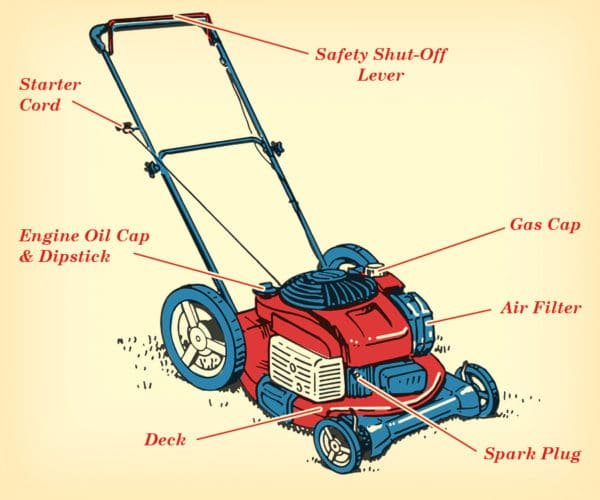Maintaining your lawn mower is key to ensuring its peak performance. Whether you have a small push mower or a large riding one, regular maintenance is essential to keep it running smoothly. In this article, we will provide you with a few helpful tips to help you maintain your lawn mower and extend its lifespan. By following these simple yet crucial steps, you can keep your lawn mower in excellent condition and ensure that it always delivers optimal results. So, let’s get started!
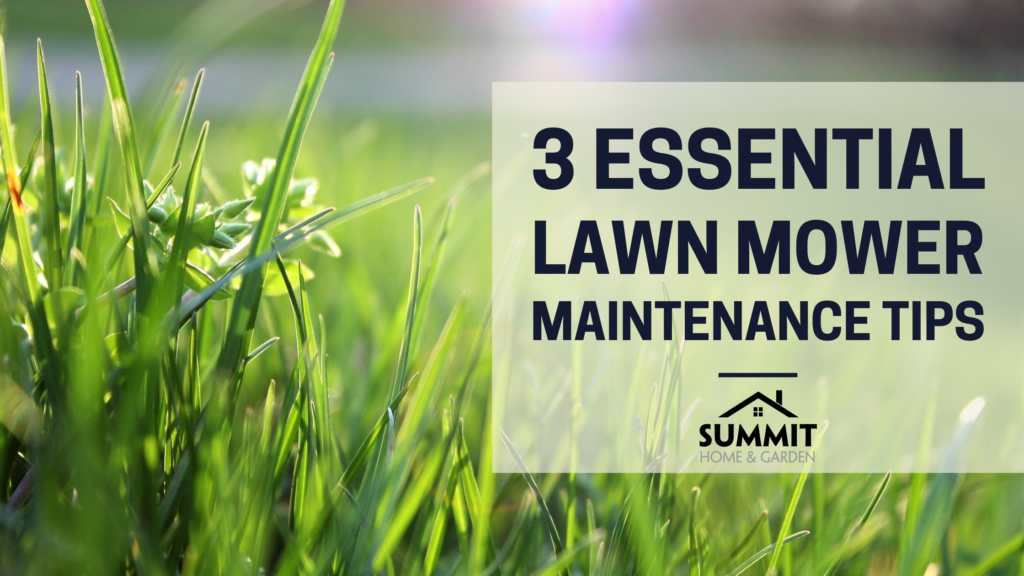
This image is property of i0.wp.com.
Regular Cleaning
Regular cleaning is an important aspect of lawn mower maintenance that should not be overlooked. By removing debris from your mower, you can prevent it from clogging the blades and impeding its performance. To do this, start by turning off the mower and disconnecting the spark plug. Then, use a brush or a cloth to carefully remove any grass clippings or dirt that may have accumulated on the surface. Pay special attention to the areas around the blades and the air filter.
Removing Debris
One of the first steps in regular cleaning is removing debris from your lawn mower. Grass clippings, dirt, and other debris can accumulate on the blades and under the mower deck, affecting its performance. To remove debris, turn off the mower and disconnect the spark plug. Use a brush or a cloth to carefully clean the blades and the underside of the mower deck. Be thorough to ensure that all debris is removed, as even small amounts can hinder the mower’s efficiency.
Cleaning the Air Filter
The air filter plays a crucial role in maintaining the performance of your lawn mower. Over time, the air filter can become clogged with dirt and debris, reducing the airflow and causing the engine to work harder. To clean the air filter, start by locating it on your mower. Remove it carefully and gently tap it against a hard surface to dislodge any loose debris. If the filter is excessively dirty, it may need to be replaced. Check your mower’s manual for specific instructions on cleaning or replacing the air filter.
Checking the Spark Plug
The spark plug is an integral part of your lawn mower’s ignition system. It generates the spark needed to ignite the fuel and start the engine. Regularly checking the spark plug is essential to ensure smooth starting and optimal performance. To do this, remove the spark plug wire and use a spark plug socket wrench to remove the plug. Inspect the plug for signs of wear, such as a worn electrode or excessive carbon buildup. If the spark plug appears damaged or worn, it should be replaced with a new one. Make sure to use the correct type and gap specified in your mower’s manual for optimal performance.
Oil and Fuel
Proper oil and fuel maintenance is vital for the smooth operation and longevity of your lawn mower. Regularly checking and changing the oil, as well as inspecting the fuel system, will help keep your mower running efficiently.
Checking Oil Level
Checking the oil level in your lawn mower is a simple yet crucial task that should be done regularly. To check the oil level, make sure the mower is on a level surface and the engine is cool. Locate the oil dipstick or oil fill cap on the engine and remove it. Wipe the dipstick clean with a cloth, insert it back into the oil fill hole without screwing it in, and then remove it again to check the oil level. Ensure that the oil level falls within the recommended range indicated on the dipstick or oil fill hole. If the oil level is low, add the appropriate type and amount of oil as specified in your mower’s manual.
Changing the Oil
Regularly changing the oil in your lawn mower is essential to maintain its performance and prolong its lifespan. Over time, the oil can become contaminated with debris and lose its lubricating properties. To change the oil, start by running the engine for a few minutes to warm up the oil, making it easier to drain. Turn off the engine, remove the spark plug wire, and place a drain pan beneath the mower. Locate the oil drain plug, typically found near the bottom of the engine, and carefully loosen it to allow the oil to drain into the pan. Once all the oil has drained, replace the drain plug and refill the engine with fresh oil of the recommended type and quantity.
Inspecting the Fuel System
Inspecting the fuel system of your lawn mower is crucial for its proper functioning. Start by checking the fuel tank for any signs of damage, such as cracks or leaks. If any issues are found, replace the fuel tank to prevent fuel leakage. Next, inspect the fuel filter, which is responsible for trapping debris and preventing it from entering the carburetor. If the filter appears dirty or clogged, replace it with a new one. Additionally, check the fuel lines for any signs of wear or damage. If any issues are detected, replace the fuel lines to avoid fuel leakage or restricted fuel flow.
Fuel Stabilization
If you anticipate storing your lawn mower for an extended period, it is important to use a fuel stabilizer to prevent the fuel from deteriorating and causing damage to the engine. Fuel stabilizers help to keep the fuel fresh and prevent the formation of deposits that can clog the fuel system. Follow the instructions on the fuel stabilizer product and add it to the fuel tank before storing the mower. Be sure to run the engine for a few minutes after adding the stabilizer to ensure it circulates through the fuel system.
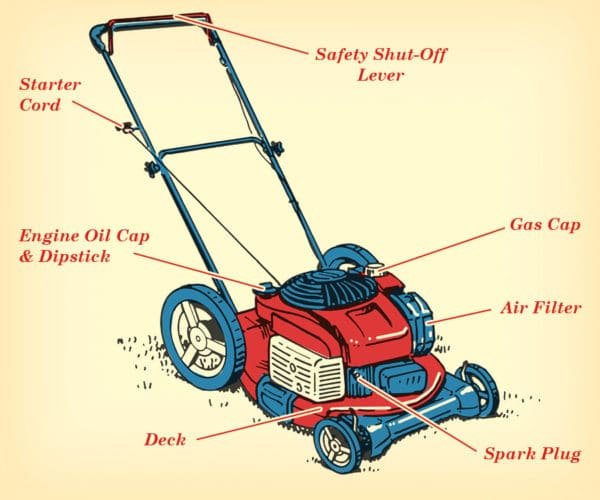
This image is property of content.artofmanliness.com.
Blade Care
Proper blade care is essential for maintaining an evenly cut lawn and preventing damage to your lawn mower. Regularly checking and sharpening the blades, as well as balancing them, will help ensure optimal cutting performance.
Checking and Sharpening the Blades
Checking the blades of your lawn mower is crucial to ensure they are in good condition and sharp enough for effective cutting. Start by disconnecting the spark plug wire and removing the blades from the mower deck. Inspect each blade for signs of damage, such as chips or bends. If any blades are damaged, they should be replaced to prevent uneven cutting or further damage to the mower. If the blades are in good condition, they may still require sharpening. Use a file or a grinder to carefully sharpen the blades, ensuring they are evenly sharpened and free from nicks or burs.
Balancing the Blades
Blade balance is an important factor in achieving a clean and even cut. A balanced blade will prevent excessive vibrations and ensure optimal cutting performance. To balance the blades, start by attaching a blade balancer to the center hole of each blade. If one side of the blade is heavier than the other, it will tilt and indicate an imbalance. To correct the imbalance, remove material from the heavier side of the blade until it becomes balanced. Continue to check the balance until the blade rests evenly in the balancer.
Battery Maintenance
If your lawn mower is equipped with a battery, proper maintenance is necessary to ensure reliable starting and optimal performance. Regularly checking the battery, charging it when needed, and cleaning the battery connections will help prolong its lifespan.
Checking the Battery
To check the battery of your lawn mower, start by locating it on the mower. Inspect the battery for any signs of damage, such as cracks or leaks. If any issues are found, replace the battery to prevent electrical malfunctions or unreliable starting. Additionally, check the battery terminals for corrosion or buildup. If corrosion is present, carefully clean the terminals using a wire brush and a mixture of baking soda and water. Make sure to disconnect the battery cables before cleaning to avoid any electrical hazards.
Charging the Battery
If your lawn mower’s battery is not a maintenance-free type, it may require periodic charging to ensure optimal performance. To charge the battery, start by disconnecting the battery cables, beginning with the negative (-) cable followed by the positive (+) cable. Use a battery charger with the appropriate settings and connect the charger to the battery terminals. Follow the instructions provided with the battery charger to ensure safe and correct charging. Once the battery is fully charged, disconnect the charger and reconnect the battery cables, ensuring they are securely tightened.
Cleaning Battery Connections
Over time, the battery connections on your lawn mower may become corroded or loose, affecting the electrical flow and causing starting issues. To clean the battery connections, start by disconnecting the battery cables, following the correct sequence of removing the negative (-) cable first and the positive (+) cable last. Use a wire brush or a battery cleaner to remove any corrosion or buildup from the battery terminals. If necessary, use a mixture of baking soda and water to help dissolve the corrosion. Once the terminals are clean, reconnect the battery cables, starting with the positive (+) cable followed by the negative (-) cable, and ensure they are securely tightened.
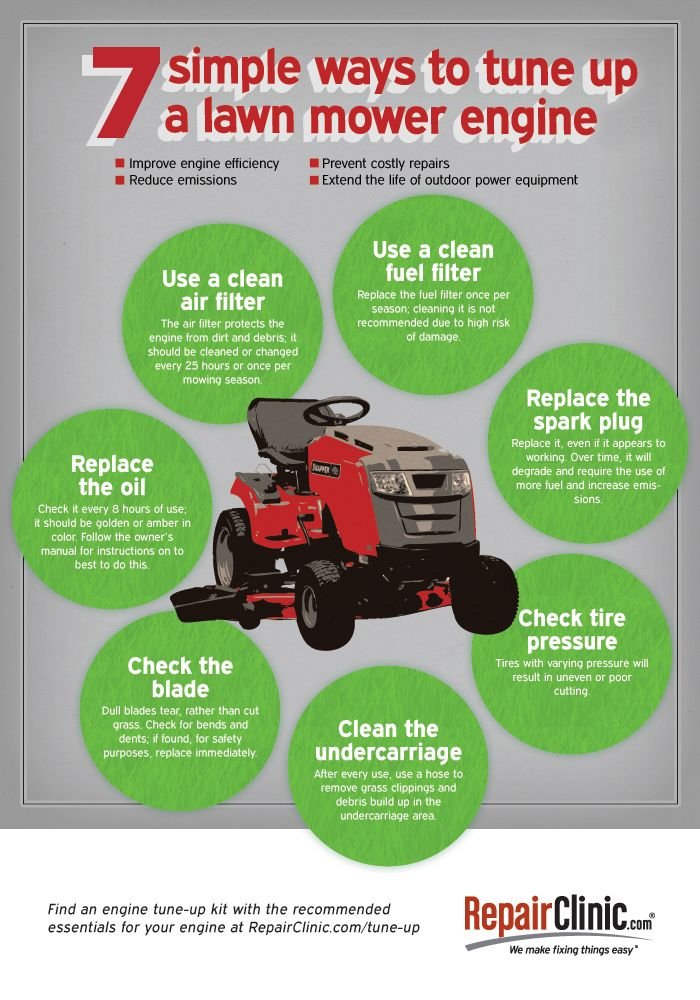
This image is property of i.pinimg.com.
Tire Care
Proper tire care is essential for maintaining traction and maneuverability while operating your lawn mower. Regularly inspecting the tire pressure, checking for tire damage, and replacing worn tires when necessary will help ensure safe and efficient mowing.
Inspecting Tire Pressure
Checking the tire pressure of your lawn mower’s tires is important for optimal performance and maneuverability. Improper tire pressure can affect the mower’s ability to maintain traction and cause uneven cutting. To check the tire pressure, use a tire pressure gauge and compare the readings to the recommended pressure specified by your mower’s manufacturer. If the tires are underinflated, use an air compressor to add air until the proper pressure is reached. If they are overinflated, release air until the recommended pressure is achieved.
Checking for Tire Damage
Regularly inspecting the tires for any signs of damage is crucial to avoid tire failure or accidents while mowing. Look for cuts, punctures, or worn tread patterns that may indicate the need for tire replacement. If any tires are damaged or excessively worn, they should be replaced promptly to ensure safe and efficient operation of the mower.
Replacing Worn Tires
As your lawn mower tires begin to wear down, their traction and performance may be compromised. To maintain optimal mowing results and prevent accidents, it is important to replace worn tires. Replacement tires should match the specifications provided by the mower’s manufacturer to ensure proper fit and performance. When replacing the tires, follow the instructions provided in your mower’s manual and make sure to install them correctly, ensuring they are securely tightened and positioned on the wheel hubs.
Cable and Belt Inspection
Regularly inspecting the cables and belts of your lawn mower is crucial to ensure proper operation and prevent unexpected failures. Damaged or worn cables and belts should be replaced promptly to avoid accidents or further damage to the mower.
Examining Cables for Signs of Wear
Inspecting the cables of your lawn mower is important to ensure they are in good condition and properly functioning. Start by disconnecting the spark plug wire for safety. Inspect each cable for signs of wear, such as fraying, cracking, or kinks. If any cables show signs of damage or wear, they should be replaced promptly. Damaged cables can affect the operation of essential functions, such as the throttle or the blade engagement system, and compromise the safety and performance of the mower.
Checking Drive Belt Tension
The drive belt on your lawn mower is responsible for transferring power from the engine to the wheels or the blades. Insufficient belt tension can result in slipping or inefficient operation. To check the drive belt tension, start by disconnecting the spark plug wire and locating the drive belt on your mower. Check the tension by gently pressing the belt with your finger. The belt should have a slight amount of give, but not be overly loose. If the belt is too loose, you may need to adjust the tension according to your mower’s manual. If the belt appears excessively worn or damaged, it should be replaced for optimal performance.
Replacing Worn Cables and Belts
If any cables or belts on your lawn mower show signs of wear, damage, or inadequate tension, they should be promptly replaced. It is important to use replacement cables and belts that match the specifications provided by the mower’s manufacturer to ensure proper fit and operation. When replacing the cables or belts, refer to your mower’s manual for detailed instructions on the removal and installation process. Take care to follow the correct procedures, securely fasten all components, and adjust the tension as necessary for optimal performance.
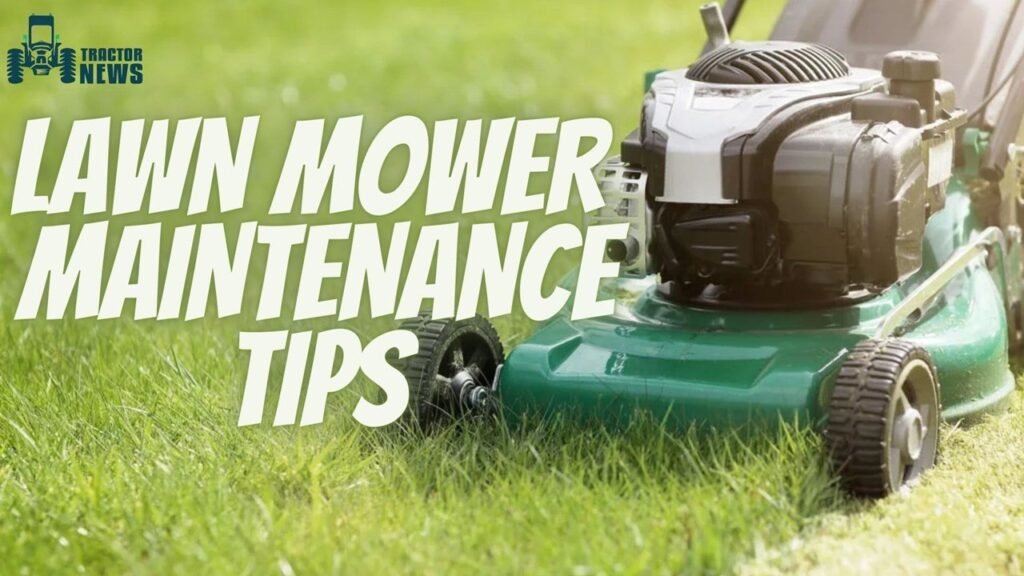
This image is property of t-news.b-cdn.net.
Engine Maintenance
Proper engine maintenance is essential for the reliable operation and longevity of your lawn mower. Regularly cleaning the cooling system, checking and cleaning the carburetor, inspecting the air intake system, and examining the exhaust system will help ensure optimal engine performance.
Cleaning the Cooling System
The cooling system of your lawn mower plays a crucial role in preventing the engine from overheating during operation. Regularly cleaning the cooling system will help maintain proper engine temperatures and prevent potential damage. Start by turning off the engine and allowing it to cool down. Once cool, remove any debris or grass clippings from the cooling fins and other accessible areas using a brush or compressed air. It is important to avoid using excessive force or sharp objects that may damage the delicate cooling fins. Additionally, check the cooling system for any signs of leaks, such as coolant stains or wet areas. If any leaks are detected, have them promptly repaired to avoid engine damage.
Checking and Cleaning the Carburetor
The carburetor is responsible for mixing the fuel and air in the correct proportions for combustion in the engine. Over time, the carburetor can accumulate dirt, debris, and deposits, affecting its performance and fuel efficiency. Regularly checking and cleaning the carburetor will help maintain optimal engine operation. Start by disconnecting the spark plug wire and locating the carburetor on your lawn mower. Remove the carburetor cover or air filter housing to access the carburetor. Inspect the carburetor for any signs of dirt, debris, or clogs. If the carburetor appears dirty, clean it using a carburetor cleaner and a soft brush. Follow the instructions provided with the cleaner and be careful not to damage any delicate components. Once cleaned, reinstall the carburetor and air filter housing, and reconnect the spark plug wire.
Inspecting the Air Intake System
The air intake system of your lawn mower ensures that clean air is delivered to the engine for efficient combustion. Regularly inspecting the air intake system will help maintain optimal airflow and prevent the engine from running lean. Start by disconnecting the spark plug wire and removing the air filter cover or housing. Inspect the air filter for any signs of dirt, debris, or damage. If the air filter appears dirty or clogged, replace it with a new one. Additionally, check the air intake tube and other components for any signs of blockages or restrictions. If any issues are detected, clean or replace the affected parts to ensure proper airflow to the engine.
Examining the Exhaust System
The exhaust system of your lawn mower plays a vital role in expelling the engine’s exhaust gases. Regularly examining the exhaust system will help identify any issues that may affect engine performance or pose safety risks. Start by turning off the engine and allowing it to cool down. Once cool, visually inspect the exhaust system for any signs of damage, such as cracks, leaks, or loose connections. Ensure that all components are securely fastened and there are no gaps or openings along the exhaust path. If any issues are found, have them promptly repaired or replaced to prevent exhaust leaks or poor engine performance.
Storage Tips
Proper storage of your lawn mower during periods of non-use is essential to maintain its condition and ensure easy starting when needed. Implementing these storage tips will help protect your mower and prolong its lifespan.
Draining the Fuel Tank
Before storing your lawn mower for an extended period, it is important to drain the fuel tank to prevent the fuel from deteriorating and causing damage to the engine. Start by running the engine until the fuel tank is empty or nearly empty. This will help ensure that the remaining fuel in the carburetor is also consumed. Once the fuel tank is empty, remove the spark plug wire for safety and store the mower in a well-ventilated area to allow any residual fuel vapors to dissipate.
Storing the Mower in a Dry Area
To protect your lawn mower from moisture and rust, store it in a dry area away from direct sunlight and extreme temperatures. Ideally, the storage area should be clean, well-ventilated, and free from any potential hazards. Before storing the mower, conduct a thorough cleaning to remove any debris, grass clippings, or dirt. Additionally, consider placing a cover over the mower to provide an extra layer of protection against dust and moisture. Regularly check the storage area to ensure there are no signs of water leaks or other potential risks that may affect the condition of the mower.
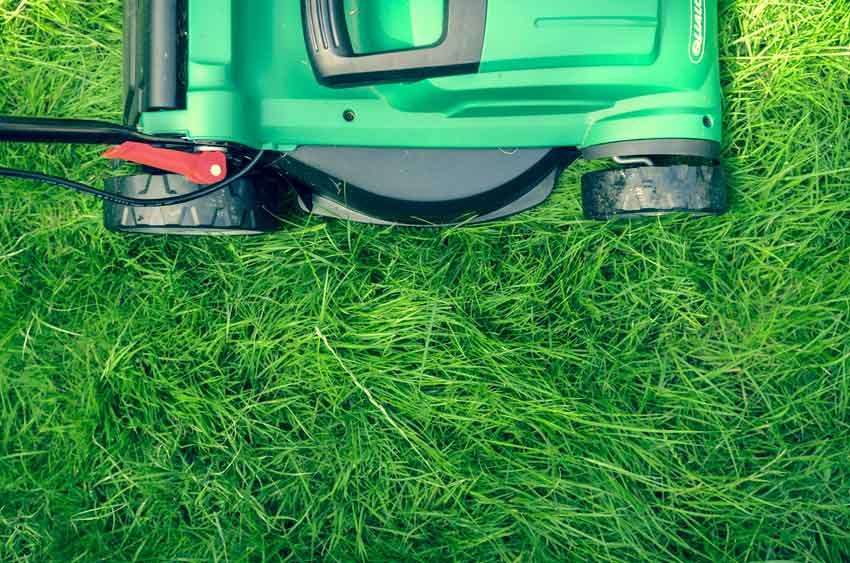
This image is property of www.trianglegardener.com.
Safety Precautions
When operating or performing maintenance on your lawn mower, it is important to prioritize safety. Implementing these safety precautions will help prevent accidents and ensure a safe working environment.
Disconnecting the Spark Plug
Before performing any maintenance tasks on your lawn mower, always disconnect the spark plug wire to prevent accidental starts. This will ensure that the mower cannot be started while you are working on it. Make it a habit to disconnect the spark plug wire and keep it disconnected until you are ready to use the mower again.
Ensuring Proper Ventilation
When operating a lawn mower or performing maintenance tasks that involve the use of chemicals or fuels, ensure that you are working in a well-ventilated area. Proper ventilation will help dissipate any potentially harmful fumes and reduce the risk of carbon monoxide poisoning. If you are working in an enclosed space, such as a garage, open doors or windows and use fans to promote air circulation.
Using Personal Protective Equipment (PPE)
When operating a lawn mower or performing maintenance tasks, it is important to use appropriate personal protective equipment (PPE) to protect yourself from potential hazards. This may include safety glasses or goggles to protect your eyes from debris, gloves to protect your hands from sharp blades or chemicals, and hearing protection if the mower produces high noise levels. Additionally, consider wearing long pants, a long-sleeved shirt, and closed-toe shoes to protect against flying debris and accidental contact with moving parts.
Professional Servicing
While regular maintenance tasks can be performed by most homeowners, there may be instances when professional servicing is necessary. Knowing when to seek professional help and finding a reputable service provider will ensure that your lawn mower receives the care it needs.
Knowing When to Seek Professional Help
There are certain situations when seeking professional help is the best course of action. If you encounter complex mechanical issues, electrical problems, or significant damage to your lawn mower, it is advisable to consult a professional. Additionally, if you are unfamiliar with certain maintenance tasks or lack the required tools or expertise, it may be safer and more efficient to rely on a professional service provider.
Finding a Reputable Service Provider
When seeking professional servicing for your lawn mower, it is important to find a reputable service provider to ensure quality work and reliable repairs. Start by asking for recommendations from friends, family, or neighbors who have had positive experiences with lawn mower servicing. You can also check online reviews and ratings to gather more information about different service providers in your area. When choosing a service provider, consider factors such as their experience, expertise, certifications, and customer service. It is also important to inquire about warranties or guarantees offered on their services to have peace of mind.
By following these comprehensive lawn mower maintenance tips, you can ensure that your mower stays in peak condition for optimal performance and longevity. Regular cleaning, proper oil and fuel maintenance, blade care, battery maintenance, tire care, cable and belt inspection, engine maintenance, proper storage, safety precautions, and knowing when to seek professional help are all essential aspects of maintaining a healthy and efficient lawn mower. Remember to consult your mower’s manual for specific instructions and guidelines, and always prioritize safety when handling and operating your lawn mower.

